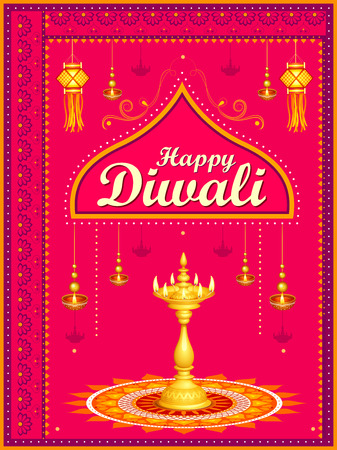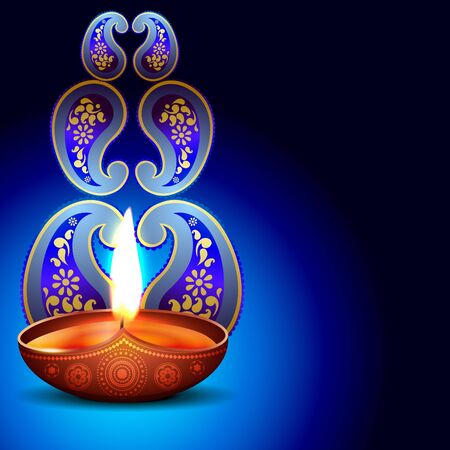The Vibrant Spectrum: Symbolism of Colours in Indian Shaadis
In the enchanting world of Indian shaadis and auspicious functions, colours do not merely decorate—they narrate stories, evoke emotions, and uphold traditions passed through generations. Each hue carries a tapestry of meanings intricately woven into the very fabric of Indian celebrations. Among the most cherished shades, red, yellow, green, and gold stand out as pillars of tradition, each signifying something profound and sacred.
Red: The Heartbeat of Indian Weddings
For every Indian bride, red is more than just a colour; it is an emotion that encapsulates love, fertility, strength, and auspicious beginnings. From the sindoor to the bridal lehenga or saree, families across regions choose red with unwavering devotion, believing it brings marital bliss and wards off negativity.
Yellow: Radiance of Joy & New Beginnings
Yellow is synonymous with haldi ceremonies—those sunlit moments where turmeric paste brightens not just skin but also spirits. This vibrant colour signifies purity, positivity, and the promise of a fresh start. Elders and loved ones ensure yellow dominates rituals to invoke blessings for prosperity and happiness.
Green & Gold: Harmony and Prosperity
Green embodies harmony, growth, and life—a symbol especially prominent in sarees worn by married women during festive gatherings. Gold threads its way through jewellery and attire as a universal marker of wealth and divine grace. To wear gold is to invite Lakshmi’s blessings while honouring family heritage with pride.
These colours are far from random choices; they reflect deep-rooted beliefs and social customs embraced by families throughout India. Whether it’s decorating homes with marigold garlands or choosing attire for each ritual, Indians follow these hues with heartfelt devotion—transforming every shaadi into a vibrant celebration where tradition meets beauty at every turn.
Traditional Attire & Iconic Colour Palettes
In the heart of every Indian shaadi, attire is not just a matter of fashion—it’s a living expression of heritage, tradition, and vibrant aesthetics. The bride’s ensemble, often the centrepiece of visual storytelling, traditionally features the beloved red lehenga. Red symbolizes prosperity, fertility, and marital bliss, making it a timeless choice across regions—from North India’s deep maroons to South India’s radiant vermilion sarees. Yet, modern brides are increasingly open to experimenting with shades like blush pinks, regal purples, and even bold golds, inspired by contemporary Bollywood trends.
The groom’s attire also plays an important cultural role. The classic ivory sherwani—sometimes accented with gold or pastel embroidery—embodies purity and new beginnings. Regional variations abound; for instance, in Bengal, white dhoti-kurtas are popular, while in Rajasthan, grooms might wear turbans with vibrant bandhani patterns.
Guest Outfits: Blending Tradition with Trend
Wedding guests take equal pride in curating their looks. Choices are often influenced by both familial customs and pop culture influences. Women opt for sarees or lehengas in auspicious hues like green (symbolizing new life) or yellow (signifying joy), while men favour kurtas or Nehru jackets in jewel tones. The interplay between tradition and personal style is where Indian weddings truly come alive.
Iconic Colours & Their Cultural Significance
| Colour | Symbolism | Common Attire |
|---|---|---|
| Red | Prosperity, Love, Auspiciousness | Brides Lehenga/Saree |
| Ivory/White | Purity, New Beginnings | Grooms Sherwani/Dhoti Kurta |
| Green | Growth, Fertility | Guest Sarees/Lehengas |
| Yellow | Happiness, Positivity | Haldi Ceremony Outfits |
| Gold | Luxe, Celebration | Sherwanis, Dupattas, Accessories |
Cultural Nuance Meets Modern Glamour
The selection of attire at Indian shaadis is never random. Every colour and fabric tells a story—of ancestry, faith, and festive spirit—while contemporary influences from Bollywood and fashion weeks add glamour to the timeless canvas. Whether you’re donning a classic Banarasi saree or a trendy pastel lehenga with mirror work, each outfit becomes a brushstroke in the grand portrait of celebration that is an Indian wedding.

3. Decor That Speaks: From Marigolds to Rangoli
Step into any Indian shaadi or auspicious function, and you are instantly wrapped in a kaleidoscope of colours and textures that do more than just please the eye—they tell stories, invoke blessings, and create an atmosphere brimming with joy. The decor is never incidental; it is carefully curated, each element soaked in meaning and tradition.
The Timeless Marigold: A Symbol of Prosperity
No Indian celebration is truly complete without the vibrant marigold. Adorning mandaps, entrances, and even wedding cars, these golden-orange blossoms are considered harbingers of good fortune and positivity. In North India, marigold garlands sway gently above doorways, while in South India, intricate floral torans frame every entrance, signifying both welcome and protection from negative energies.
Rangoli: Art at Your Feet
As you step inside the venue, your gaze naturally falls upon the rangoli—exquisite patterns drawn on the floor using coloured powders, flower petals, or even grains. Each region boasts its own style—kolam in Tamil Nadu, alpana in Bengal—but all share a common purpose: to invite Goddess Lakshmi’s blessings and infuse the space with auspiciousness. The burst of reds, yellows, blues, and greens not only sets a festive mood but also becomes a canvas for creative expression among family members.
Regional Flavours in Decor
From the mirror work and pastel drapes seen in Gujarati weddings to the regal red-and-gold palette of Punjabi celebrations, each state brings its own flavour to wedding aesthetics. South Indian nuptials often feature banana leaves and jasmine strings, while Maharashtrian functions incorporate mango leaves and orange-hued fabrics. These choices are more than visual treats—they echo centuries-old customs passed down through generations.
In every thread of fabric, every petal laid out in concentric circles, colour isn’t just decoration—it is emotion and energy woven into the very heart of Indian celebrations. Whether it’s the marigold’s warmth or rangoli’s artistry beneath your feet, these decor elements are living proof that when it comes to shaadis and functions in India, beauty is always meaningful.
4. Auspicious Rituals and their Colourful Charms
When we immerse ourselves in the vibrant world of Indian shaadi and auspicious functions, each ritual becomes a canvas painted with colours that hold deep meanings and blessings. Let’s take a closer look at the most cherished pre-wedding rituals—Haldi, Mehendi, and Sangeet—and decode the palette of hues that define their essence and the positive energies they are believed to invoke.
Haldi: The Golden Blessing
The Haldi ceremony is synonymous with yellow—a colour that radiates warmth, positivity, and new beginnings. Traditionally, a paste made from turmeric, sandalwood, and rosewater is applied to the bride and groom. This ritual is not just about glowing skin; it symbolises purification, protection from negative energies, and a bright start to marital life. In Indian culture, yellow stands for happiness and prosperity, making it an indispensable part of any auspicious occasion.
Mehendi: Greens of Growth and Love
The Mehendi function is a celebration of intricate artistry where green takes centre stage. The lush hue of henna signifies fertility, harmony, and good fortune. As the bride’s hands and feet are adorned with elaborate designs, it is believed that the deeper the colour, the stronger the love between the couple. Mehendi is also about togetherness—family and friends gather to sing, dance, and bless the bride with joy and abundance.
Sangeet: A Symphony of Colours
Sangeet is where tradition meets revelry—a musical night bursting with a kaleidoscope of colours. There’s no single shade here; instead, guests flaunt everything from royal blues to vibrant reds, reflecting unity in diversity. Every colour tells a story: blue for trust, red for passion, gold for opulence. The Sangeet isn’t merely entertainment—it’s an outpouring of collective blessings through music, dance, and unrestrained laughter.
Rituals & Their Signature Colours
| Ritual | Main Colour(s) | Symbolism/Blessings |
|---|---|---|
| Haldi | Yellow | Purity, Prosperity, Protection from Evil Eye |
| Mehendi | Green | Growth, Fertility, Deepening Love |
| Sangeet | Multicolour (Blue, Red, Gold) | Unity, Joy, Celebration of Togetherness |
A Living Tapestry of Indian Traditions
Each ritual in an Indian shaadi is more than just a ceremony—it’s a living tapestry woven with cultural wisdom and colourful blessings. From the golden glow of Haldi to the verdant allure of Mehendi and the festive explosion at Sangeet, these traditions embody India’s unique way of celebrating life’s most precious milestones with meaningful hues that linger long after the festivities end.
5. Regional Flavours: Colour Sensibilities Across India
India is a kaleidoscope of cultures, and nowhere is this more evident than in the colour palettes chosen for shaadi and auspicious functions across its regions. Each zone—North, South, East, and West—brings its own unique hues and symbolism to the celebration, weaving a vivid tapestry that reflects both tradition and modernity.
North Indian Grandeur: Bold & Regal Tones
In the North, weddings are nothing short of grand spectacles. Think deep reds, maroons, royal blues, and shimmering golds dominating bridal lehengas and décor alike. Red, in particular, holds immense auspicious significance as a symbol of prosperity, passion, and new beginnings. Gold embroidery adds an extra touch of opulence, making every bride feel like royalty under the vibrant shamiana.
South Indian Subtleties: Graceful Elegance
Travel down South, and you’ll notice a gentler yet equally rich approach to wedding colours. Brides often don elegant Kanjeevaram sarees in hues of ivory, mustard yellow, forest green, or radiant magenta. White and off-white—rarely used in North Indian weddings—are favoured here for their purity and spiritual symbolism. Gold jewellery gleams against these subtle backdrops, echoing the region’s understated grace.
Eastern Echoes: Playful & Bright Palettes
The East brings with it playful vibrancy—Bengali brides drape themselves in red and white Banarasi sarees highlighted by golden borders. In Assam and Odisha, silk mekhela chadors in bright yellows, greens, or pinks steal the show. Here, colour choices often reflect not just family tradition but also local flora and seasonal festivals that coincide with wedding dates.
Western Whimsy: Eclectic & Contemporary Blends
West India is known for its experimental spirit. In Gujarat and Rajasthan, mirror work lehengas burst forth in fuchsias, oranges, purples, and peacock blues—each shade celebrating joy and abundance. Maharashtrian brides often favour paithani sarees with deep greens and contrasting pinks or purples. The region effortlessly mixes tradition with contemporary flair, ensuring each event feels both rooted and refreshingly modern.
A Unifying Celebration of Diversity
No matter which part of India you visit during shaadi season, you will experience a joyous riot of colours—a living testament to unity in diversity. These regional preferences are not merely aesthetic choices; they are powerful expressions of community identity, heritage, and hope for auspicious new beginnings.
6. Modern Twists: Blending Heritage with Contemporary Colour Trends
The Indian shaadi has always been a kaleidoscope of emotions, rituals, and radiant colours. But if you peek into today’s wedding albums, you’ll notice something uniquely refreshing—a harmonious fusion of traditional roots with contemporary flair. Couples across India are reimagining celebrations by choosing pastel hues over classic reds and golds, infusing their ceremonies with softer shades like mint green, blush pink, and powder blue. These colours reflect not just modern aesthetics but also the global influences that young Indians embrace.
Pastel Palettes & Fusion Themes
Imagine the elegance of a bride draped in an ivory lehenga adorned with delicate floral embroidery, or a groom opting for a powder blue sherwani—these choices echo both sophistication and subtlety. Themed weddings now blend Rajasthani folk elements with minimalist décor, or pair South Indian temple traditions with whimsical fairy lights. Such creative expressions allow couples to celebrate their heritage while painting their own story on the canvas of tradition.
Custom Designs: Personalised Touches
Personalisation is the new mantra for auspicious functions. From monogrammed dupattas to bespoke mehendi patterns featuring couple’s love stories, every detail speaks of individuality. Artisans are collaborating with families to create custom colour palettes that narrate ancestral tales while embracing modern sensibilities. Even mandap designs are evolving—think geometric installations in earthy tones paired with marigold garlands or glass mandaps overlooking lush gardens.
Honouring Roots While Embracing Change
Despite these chic innovations, one thread remains unbroken—the deep respect for tradition. Couples consult elders for auspicious colours based on family customs and astrological beliefs, ensuring that every hue carries meaning. Whether it’s weaving a grandmother’s Banarasi saree into the décor or invoking sacred reds through symbolic accents, today’s celebrations beautifully balance old and new.
This interplay of contemporary colour trends and cherished traditions highlights the vibrant spirit of Indian weddings—a celebration where innovation dances hand-in-hand with heritage, creating memories that are as colourful as they are meaningful.

